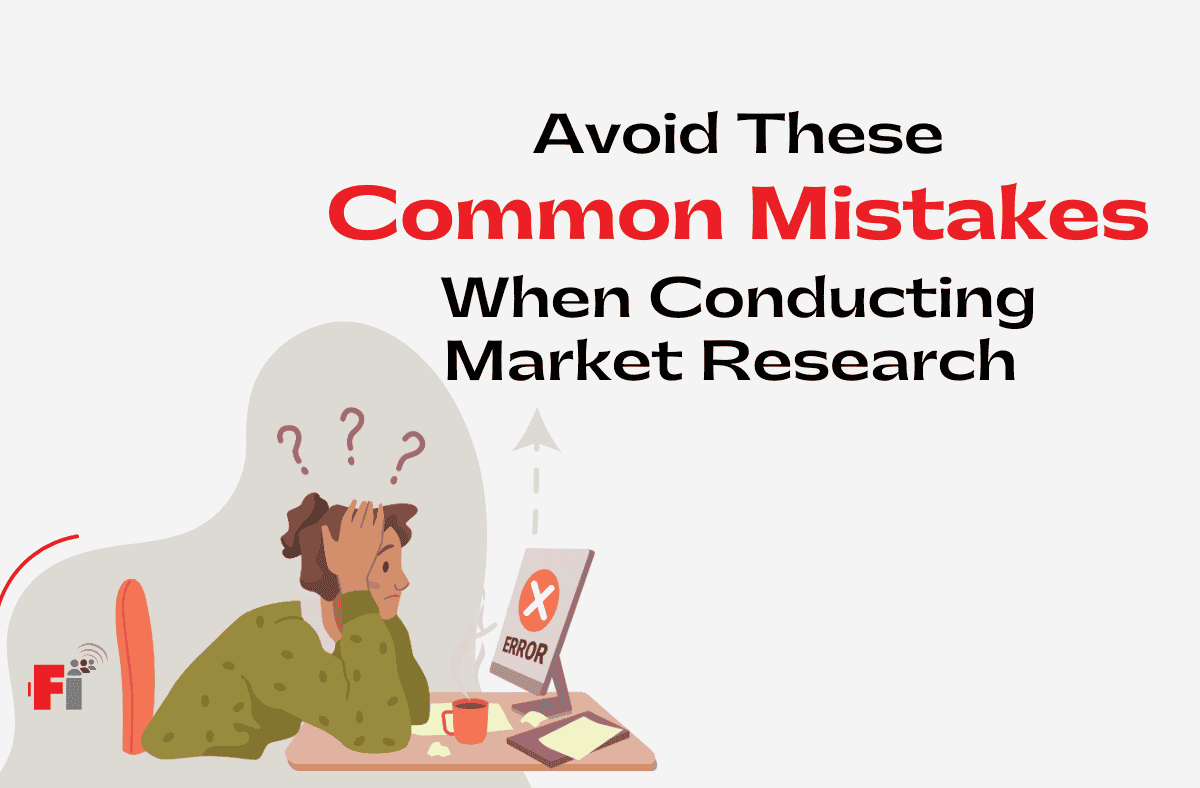Avoid These Market Analysis Mistakes
Ellie Moore

Photo: Avoid These Market Analysis Mistakes
Market analysis is an essential tool for businesses aiming to understand their industry, competitors, and customers. However, even the most seasoned analysts can fall into common pitfalls that compromise the quality and utility of their findings. These mistakes can lead to poor strategic decisions, missed opportunities, or wasted resources. This article delves into the most common market analysis mistakes and how to avoid them, ensuring your efforts yield actionable insights and real business value.
Why Market Analysis Matters
Market analysis helps businesses identify trends, assess competition, and understand customer needs. A well-executed market analysis can inform product development, marketing strategies, and investment decisions. However, the value of market analysis hinges on its accuracy and depth. Mistakes in this process can distort perceptions and lead to costly errors.
Top Market Analysis Mistakes to Avoid
1. Ignoring Data Quality
Using unreliable or outdated data is one of the most significant errors in market analysis. Poor data quality can lead to flawed conclusions that derail business strategies.
- Why It Happens: Many analysts rely on easily accessible data, overlooking its accuracy, timeliness, or relevance.
- How to Avoid It: Always verify the credibility of your data sources. Cross-check information from multiple sources and prioritize data from reputable, up-to-date databases or industry reports.
2. Failing to Define Objectives Clearly
Diving into analysis without clear goals is like setting sail without a destination. This mistake often results in wasted time and scattered insights.
- Why It Happens: Businesses may rush into analysis due to pressure to produce results quickly.
- How to Avoid It: Start with a clear question or objective. Are you trying to identify a target market, evaluate competitors, or forecast industry trends? Define specific goals to focus your efforts effectively.
3. Overlooking the Competitive Landscape
Focusing solely on customer behavior while neglecting competitors can leave your business vulnerable.
- Why It Happens: Some analysts assume their competitors are static or irrelevant, focusing instead on internal data.
- How to Avoid It: Conduct regular competitor analysis as part of your market study. Tools like SWOT analysis (Strengths, Weaknesses, Opportunities, Threats) can help you evaluate your competitors’ strategies and identify opportunities for differentiation.
4. Misinterpreting Data
Numbers don’t lie, but they can mislead if not interpreted correctly. Misinterpretation often leads to incorrect conclusions and flawed strategies.
- Why It Happens: Lack of analytical skills or biases can skew data interpretation.
- How to Avoid It: Invest in training your team or hiring skilled analysts. Use visualization tools to make data easier to interpret and always question the assumptions behind your conclusions.
5. Failing to Segment the Market
Treating your audience as a monolithic group can dilute the effectiveness of your strategies.
- Why It Happens: Analysts may overlook the importance of segmentation due to limited resources or time constraints.
- How to Avoid It: Use demographic, psychographic, and behavioral data to segment your market into distinct groups. This approach allows for more targeted and impactful strategies.
6. Relying Too Heavily on Historical Data
While historical data provides valuable context, relying solely on it can be problematic, especially in rapidly changing industries.
- Why It Happens: Historical data is often easier to access and analyze than predictive models or current trends.
- How to Avoid It: Balance historical insights with real-time data and future-oriented models. Stay updated on industry developments and emerging trends.
7. Ignoring External Factors
Economic, political, and social factors play a crucial role in shaping market dynamics. Ignoring these can render your analysis incomplete.
- Why It Happens: Analysts may focus narrowly on industry-specific data, overlooking macroeconomic or geopolitical influences.
- How to Avoid It: Include PESTLE analysis (Political, Economic, Social, Technological, Legal, Environmental) in your market study to account for external factors that might impact your business.
8. Overcomplicating the Analysis
Complex models and excessive data can overwhelm decision-makers and obscure actionable insights.
- Why It Happens: Analysts may overcomplicate their work to showcase technical skills or out of fear of oversimplification.
- How to Avoid It: Focus on delivering clear and actionable insights. Simplify where possible without sacrificing depth, and present findings in an easily digestible format.
9. Neglecting Customer Feedback
Market analysis often prioritizes quantitative data over qualitative insights like customer feedback, which can lead to a disconnected understanding of consumer needs.
- Why It Happens: Quantitative data may seem more reliable and easier to analyze.
- How to Avoid It: Integrate customer surveys, reviews, and focus groups into your analysis. Combine qualitative insights with quantitative data for a comprehensive view.
10. Failing to Review and Update Analysis
Markets are dynamic, yet many businesses treat market analysis as a one-time activity. This approach quickly renders findings obsolete.
- Why It Happens: Limited resources or the belief that the initial analysis is sufficient can lead to this oversight.
- How to Avoid It: Schedule regular updates to your market analysis. Set intervals for reviewing and revising your data and strategies based on new developments.
Best Practices for Effective Market Analysis
- Leverage Technology: Use tools like Google Analytics, SEMrush, or Tableau to streamline data collection and analysis.
- Collaborate Across Teams: Involve marketing, sales, and product teams to ensure your analysis aligns with organizational goals.
- Stay Objective: Avoid confirmation bias by questioning assumptions and exploring alternative explanations.
- Continuously Learn: Attend workshops, read industry reports, and stay informed about advancements in market analysis techniques.
Conclusion: Precision Over Perfection
Avoiding common market analysis mistakes requires a mix of diligence, objectivity, and adaptability. By recognizing potential pitfalls and implementing best practices, businesses can ensure their market insights remain accurate, relevant, and actionable. Remember, the goal of market analysis isn’t perfection but precision—delivering insights that drive informed decisions and foster growth.
For more tips and tools on market analysis, explore this comprehensive guide or consult experts in the field to refine your approach.
Finance & Investment
View All
June 28, 2025
Best Finance Books to Boost Your KnowledgeElevate your online presence with expert SEO content. Learn how valuable, authoritative content drives traffic, builds trust, and aligns with Google's E-E-A-T.
Ellie Moore

April 24, 2025
Bajaj Housing Finance Share PriceMaster expert SEO content for authority & top rankings. Create valuable, trustworthy resources that satisfy user intent & search engines.
Ellie Moore

October 31, 2025
Get a Home with 0 Down MortgageUnlock top rankings & authority with expert SEO content. Learn to create valuable, trustworthy content aligning with E-E-A-T for lasting digital success.
Ellie Moore

November 10, 2024
Stock Market Education: The Ultimate Guide to Becoming a Self-Taught InvestorBecome a self-taught stock market expert! This ultimate guide provides the education you need. Start your investment journey with confidence!
Ellie Moore

November 5, 2024
Unlocking the Secrets of Successful Stock Market Investing: A Comprehensive GuideUncover the ultimate guide to stock market success! Learn proven strategies, master market analysis, and unlock your path to financial freedom. Click to start your investment journey!
Ellie Moore

May 9, 2025
Yahoo Finance SPY TrackerElevate your content! Learn to craft expert SEO content that satisfies Google's E-E-A-T, drives higher rankings, and captivates readers. Stand out in the digita...
Ellie Moore
Insurance
View AllSafeguard your future with Ultimate Liberty Mutual Insurance. Discover robust coverage, financial protection, and expert risk mitigation for total peace of mind...
Ellie Moore
Don't risk it! Ohio renters insurance protects your assets & peace of mind. Compare costs, find comprehensive coverage, and secure your financial well-being.
Ellie Moore
Discover the world of reinsurance, its purpose, and how it protects insurers against big claims.
Ellie Moore
Discover how peer-to-peer insurance models operate, offering community-based risk-sharing alternatives.
Ellie Moore
Secure optimal car insurance! Our guide helps policyholders & risk managers find top providers, maximize value, protect assets, and avoid overpaying.
Ellie Moore
Understand the legal side of insurance with this guide to policy exclusions. Learn what’s not covered and why it matters.
Ellie Moore
Education
View AllProject-based learning engages students by tackling real-world problems. Learn how this approach fosters critical thinking and creativity.
Read MoreExplore how emotional intelligence impacts academic performance. Learn strategies to help students develop emotional skills for better learning outcomes.
Read MoreDiscover why liberal arts education remains valuable in today’s tech-driven world. Explore how it fosters critical thinking and adaptability.
Read MoreOnline homeschooling communities are growing fast. Explore how they provide support, resources, and a sense of belonging to families worldwide.
Read MoreDifferent cultures approach early education in unique ways. Discover how cultural values shape learning practices for young children around the world.
Read MoreArts education is key to fostering creativity. Learn why it’s important in schools and how it helps students develop essential life skills.
Read MorePopular Post 🔥
View All
1
2
3
4
5
6
7
8
9
10
Health





Automotive
View All
July 22, 2025
Automotion 2025 What To Expect In Automotive Tech
Explore Automotion 2025's future tech: electric vehicles, advanced autonomy, and AI reshaping mobility, safety, and the driving experience.

August 7, 2025
Evans Automotive Offers Trusted Vehicle Solutions
Evans Automotive: Your trusted partner for comprehensive vehicle solutions. Experience transparent, expert care & peace of mind on the road.

July 14, 2025
How Automotive Smoke Machines Help Diagnose Cars
Demystify car issues! Automotive smoke machines reveal invisible leaks causing Check Engine lights, rough idle, & poor fuel economy. Save time & money.

July 31, 2025
How To Use An Automotive Clay Bar Effectively
Unlock a pristine car finish! Learn how to use a clay bar to remove hidden contaminants, boost shine, and protect your paint. Get pro results at home.

August 14, 2025
Are Brunt Boots Good For Automotive Work
Considering Brunt Boots for auto work? Discover if they meet the safety & comfort demands of mechanics, including EH, slip & toe protection.

August 9, 2025
Macomb Automotive Group Service Overview
Discover Macomb Automotive Group: a used car dealership specializing in sales, not auto repair. Explore their inventory & buying process.

















